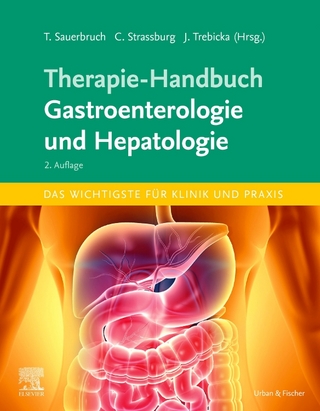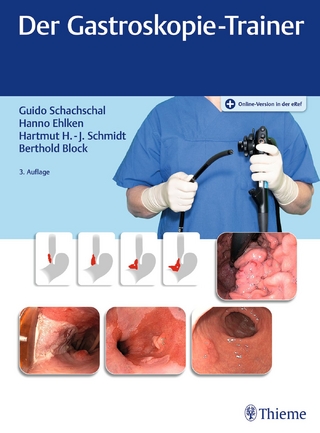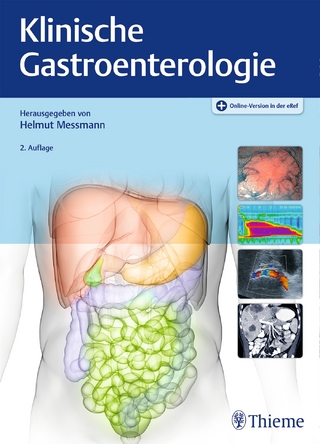
Psychophysiology of the Gastrointestinal Tract
Kluwer Academic/Plenum Publishers (Verlag)
978-0-306-41089-5 (ISBN)
- Titel ist leider vergriffen;
keine Neuauflage - Artikel merken
More recently, however, a new paradigm for analyzing the relationships involving disordered physiological functions and behavioral interactions has been devel- oped within the framework of what has been termed behavioral medicine. The conceptual boundaries of this relatively new approach to behavioral physiology have not yet been firmly established, but the major differences between the new "behavioral" model and the traditional "psychosomatic" model are brought into sharp relief by the experimental and clinical contributions to the present volume.
I Esophagus.- 1 Studies of Esophageal Function during Waking and Sleep.- 1. Introduction.- 2. Tests of Esophageal Function.- 2.1. Esophageal Motility.- 2.2. Clinical Tests of Acid Clearance.- 2.3. Esophageal pH Monitoring.- 3. Esophageal Function during Sleep.- 4. Implications and Future Studies.- 5. References.- 2 The Responsiveness of the Esophagus to Environmental Stimuli.- 1. Introduction.- 2. Types of Esophageal Motility.- 3. Relation of Tertiary Contractions to Psychological Stress.- 4. Experimental Studies of Acoustically Induced Esophageal Contractions.- 4.1. Intensity of Stimuli Required to Produce Contractions.- 4.2. Orienting versus Defense Reactions.- 5. Implications for Understanding and Treatment of Esophageal Motor Disorders.- 6. References.- 3 Disorders of the Esophagus: Applications of Psychophysiological Methods to Treatment.- 1. Introduction.- 2. Disorders of the Esophagus.- 2.1. Globus Hystericus.- 2.2. Diffuse Esophageal Spasm.- 2.3. Reflux Esophagitis.- 2.4. Achalasia.- 3. Physiology of the Lower Esophageal Sphincter.- 3.1. Reflex Motor Responses.- 3.2. Pharmacology of the LES.- 4. Biofeedback Training to Raise Lower Esophageal Sphincter Pressure.- 5. References.- 4 Psychological Treatment Approaches to Psychogenic Vomiting and Rumination.- 1. Introduction.- 2. Clinical Syndrome.- 2.1. Topography.- 2.2. Etiology.- 2.3. Clinical Consequences.- 3. Treatment Approaches.- 3.1. Medical Interventions.- 3.2. Massive Attention.- 3.3. Psychotherapy.- 3.4. Peripheral Electric Shock Therapy.- 3.5. Taste Aversion Methods.- 3.6. Differential Reinforcement and Other Behavioral Techniques.- 4. Comparison of Treatment Approaches.- 5. Conclusions.- 6. References.- II Stomach.- 5 Surface Gastrograms as Measures of Gastric Motility.- 1. Introduction: A Short History of Gastric Motility Records.- 2. Electromotor Activity of the Stomach.- 2.1. The Role of Indices of Electromotor Activity.- 2.2. Contractile Activity of the Stomach.- 2.3. Electrical Activity of the Stomach.- 3. Signal Parameters of Gastric Activity and Their Psychophysiological Information Content.- 4. Electrical Recordings from the Abdominal Surface: Current Practice in Psychophysiology.- 4.1. Apparatus and Procedures: Overview.- 4.2. Recording Sites.- 4.3. Signal Analysis.- 4.4. Validity of Electrogastrograms-Critical Evaluation.- 5. Magnetogastrography.- 5.1. Classical Methods.- 5.2. Three-Axes Magnetogastrogram with Freely Moving Magnet.- 5.3. Magnetogastrographies with Ferromagnetic Tracer Material.- 5.4. Signal Analysis.- 6. Conclusion.- 7. References.- 6 Conjoint Gastrography: Principles and Techniques.- 1. Introduction.- 2. Rationale of Conjoint Gastrography.- 3. Electrogastrograms.- 3.1. Recording Sites.- 3.2. Electrodes and Skin Preparation.- 3.3. Amplifiers and Filters.- 4. Magnetogastrograms.- 4.1. Magnetometers and Magnetic Capsules.- 4.2. Amplifiers and Filters.- 4.3. Procedure.- 4.4. Procedure with Ferrite Test Meal.- 5. General Procedure and Control Measurements.- 6. Data Acquisition.- 6.1. Laboratory Configuration.- 6.2. Portable Data Logging.- 7. Signal Analysis.- 7.1. Overview.- 7.2. Principles of Fourier Analysis in Gastrography.- 7.3. Basic Fourier Mathematics.- 7.4. Auto- and Cross-spectral Analyses of Conjoint Gastrograms.- 7.5. Evaluation of Spectra.- 8. Selected Results.- 8.1. Peak Histograms.- 8.2. Cross-Correlograms.- 8.3. Coherence Functions.- 9. References.- 7 Measurement of Gastric Acid Secretion.- 1. Introduction.- 2. Measurement of Gastric Acid.- 2.1. The pH Method.- 2.2. The pH Meter-Titration Method.- 2.3. Titration with Chemical Indicators.- 3. Tests of Gastric Secretory Function.- 3.1. Basal Acid Output (BAO).- 3.2. Peak Acid Output (PAO), Maximal Acid Output (MAO), and Calculated Maximal Acid Output (CMAO).- 4. Psychophysiological Measures of Gastric Acid.- 4.1. Intragastric Measures.- 4.2. External Measurement of Gastric Acid.- 5. Subject Considerations in Gastric Research.- 5.1. Subject Selection.- 5.2. Subject Preparation.- 5.3. Intubation Procedure.- 6. References.- 8 Telemetric and Isotope Methods of Measuring Gastric Acid Secretion, Motility, and Emptying.- 1. Measurement of Gastric Acid Secretion by Intragastric Titration and a Telemetering pH Sensor.- 2. Measurement of Intragastric Pressures by Means of a Telemetering Capsule.- 3. Measurement of Gastric Motility and Emptying by a Radioisotope Technique.- 4. References.- 9 Responsiveness of the Stomach to Environmental Events.- 1. Introduction.- 2. Causes for Inadequate Information about Stomach Responsiveness.- 2.1. Unreliability of Subjective Reports.- 2.2. Difficulties with All Known Recording Techniques.- 2.3. Confounding by Digestive Functions.- 2.4. Confounding by Spontaneous Activity.- 3. Passive Responding to External Situations.- 3.1. Temperature.- 3.2. Tones and Lights.- 3.3. Fear, Anger, and Other Emotional States.- 4. Active Responding to External Stimuli.- 4.1. Exercise.- 4.2. Mental Arithmetic.- 4.3. Stress and Ulceration.- 5. Summary and Conclusions.- 6. References.- 10 Treating Stomach Disorders: Can We Reinstate Regulatory Processes?.- 1. Introduction.- 2. Structure, Function, and Disorders of the Stomach.- 3. Regulation.- 3.1. The Role of Efferent Activity in Regulation.- 3.2. The Role of Afferent Activity in Regulation.- 4. Disregulation of the Stomach.- 5. Reinstating Regulatory Processes.- 5.1. The Medical Approach to Treating Stomach Disorders.- 5.2. The Psychoanalytic Approach to Treating Stomach Disorders.- 5.3. The Psychobiological Approach to Treating Stomach Disorders.- 5.4. Biofeedback and Gastric Activity.- 6. Summary.- 7. References.- III Colon.- 11 The Measurement of Colon Motility.- 1. Introduction.- 2. Measurement of the Segmenting Contractions of the Distal Colon.- 2.1. Concept of Paradoxical Motility.- 2.2. Recording Techniques.- 2.3. Stimulation Techniques.- 2.4. Quantification Techniques.- 3. Assessment of Compliance of the Bowel Wall.- 4. Assessment of Evacuation.- 5. References.- 12 Measurement of Electrical Activity of the Colon in Man.- 1. Introduction.- 2. Methods.- 2.1. In Vivo.- 2.2. In Vitro.- 3. Normal Electrical Patterns in Vivo.- 3.1. Slow Waves.- 3.2. Fast Activity.- 4. Normal Electrical Patterns in Vitro.- 4.1. Longitudinal Muscle.- 4.2. Circular Muscle.- 5. Abnormal Electrical Patterns.- 5.1. Diverticular Disease.- 5.2. Irritable Bowel Syndrome.- 5.3. Other Functional Disorders.- 6. Summary.- 7. References.- 13 Colonic Psychophysiology: Implications for Functional Bowel Disorders.- 1. Introduction.- 1.1. Early Observations on Gastrointestinal Responsiveness.- 1.2. Early Observations on Colonic Responsiveness.- 2. Colonie Psychophysiology.- 2.1. Pioneering Experiments.- 2.2. Hyper- versus Hypomotor Responsiveness.- 3. Implications for Functional Bowel Disorders.- 3.1. Five Hypotheses.- 3.2. Abnormal Colonie Responsiveness Hypothesis.- 3.3. Abnormal Stimulation Hypothesis.- 3.4. Abnormal Interoception Hypothesis.- 3.5. Illness Behavior Hypothesis.- 3.6. Heterogeneity Hypothesis.- 3.7. Treatment Implications.- 4. Conclusion.- 5. References.- 14 Irritable Bowel Syndrome: Applications of Psychophysiological Methods to Treatment.- 1. Introduction.- 2. Diagnostic Criteria for Irritable Bowel Syndrome.- 3. Psychophysiology of Irritable Bowel Syndrome.- 3.1. Effects of Meals.- 3.2. Psychological Characteristics of Patients with Irritable Bowel Syndrome.- 3.3. Pain from Gas.- 4. Fiber in the Treatment of Functional Bowel Disorders.- 5. Biofeedback Training to Decrease Colonic Motility.- 6. References.- IV Anal Canal and Rectum.- 15 Fecal Incontinence and Encopresis: A Psychophysiological Analysis.- 1. Introduction.- 2. Diagnosis.- 3. Analysis of Mechanism.- 4. Intervention.- 5. References.- 16 Manometric and Electromyographic Techniques for Assessment of the Anorectal Mechanism for Continence and Defecation.- 1. Introduction.- 2. Anatomy and Physiology.- 3. Measurement Techniques.- 3.1. External Anal Sphincter Contraction.- 3.2. Sensibility for Rectal Distension.- 3.3. Internal Anal Sphincter.- 4. Applications of Psychophysiological Methods to Treatment of Incontinence.- 5. References.- V Interoception.- 17 Interoception: Awareness of Sensations Arising in the Gastrointestinal Tract.- 1. Introduction.- 2. Methods of Investigating Visceral Perception.- 2.1. Method of Limits.- 2.2. Signal Detection Analysis.- 2.3. Forced Choice Procedure.- 2.4. Confounding of Perception and Control.- 2.5. Discrimination Training.- 3. Behavioral Significance of Visceral Perception.- 3.1. Cuing Function in Bowel Control.- 3.2. Hunger and Satiety.- 3.3. Labeling of Emotions.- 3.4. Acquisition and Retention of Voluntary Control over a Visceral Response.- 3.5. Psychosomatic Etiology.- 4. Summary and Conclusions.- 5. References.- 18 Intestinal Afferent Influence on Behavior.- 1. Introduction.- 2. Research Strategies.- 3. Subjective Detection of Gastrointestinal Stimuli.- 4. Effects of Stimulus Intensity and Site of Stimulation.- 5. References.
| Erscheint lt. Verlag | 1.6.1983 |
|---|---|
| Zusatzinfo | biography |
| Sprache | englisch |
| Themenwelt | Medizinische Fachgebiete ► Innere Medizin ► Gastroenterologie |
| Studium ► Querschnittsbereiche ► Prävention / Gesundheitsförderung | |
| ISBN-10 | 0-306-41089-3 / 0306410893 |
| ISBN-13 | 978-0-306-41089-5 / 9780306410895 |
| Zustand | Neuware |
| Haben Sie eine Frage zum Produkt? |
aus dem Bereich


